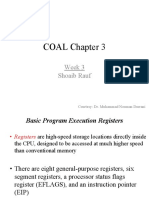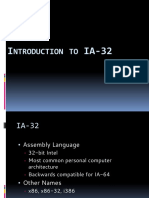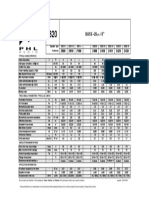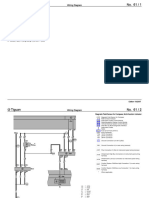0% found this document useful (0 votes)
105 views72 pagesch4 Handouts
The document provides an overview of static and dynamic analysis techniques for examining malware, with a focus on disassembly. It discusses six levels of program abstraction from hardware to high-level languages. The key concepts covered include disassembling malware from machine code into assembly language, the structure of x86 assembly language, basic instructions like MOV and NOP, registers including EIP and EFLAGS, and data types like operands, memory addresses, and opcodes.
Uploaded by
Marah IrshedatCopyright
© © All Rights Reserved
We take content rights seriously. If you suspect this is your content, claim it here.
Available Formats
Download as PDF, TXT or read online on Scribd
0% found this document useful (0 votes)
105 views72 pagesch4 Handouts
The document provides an overview of static and dynamic analysis techniques for examining malware, with a focus on disassembly. It discusses six levels of program abstraction from hardware to high-level languages. The key concepts covered include disassembling malware from machine code into assembly language, the structure of x86 assembly language, basic instructions like MOV and NOP, registers including EIP and EFLAGS, and data types like operands, memory addresses, and opcodes.
Uploaded by
Marah IrshedatCopyright
© © All Rights Reserved
We take content rights seriously. If you suspect this is your content, claim it here.
Available Formats
Download as PDF, TXT or read online on Scribd
/ 72




























































































